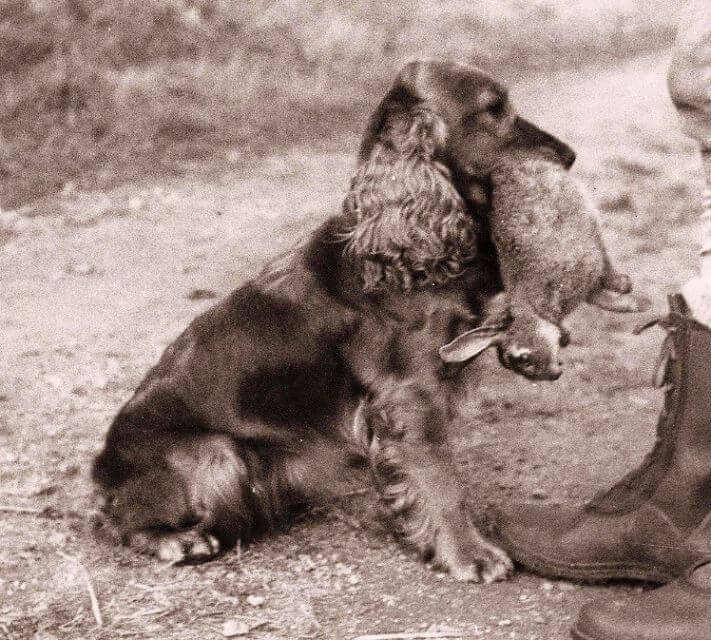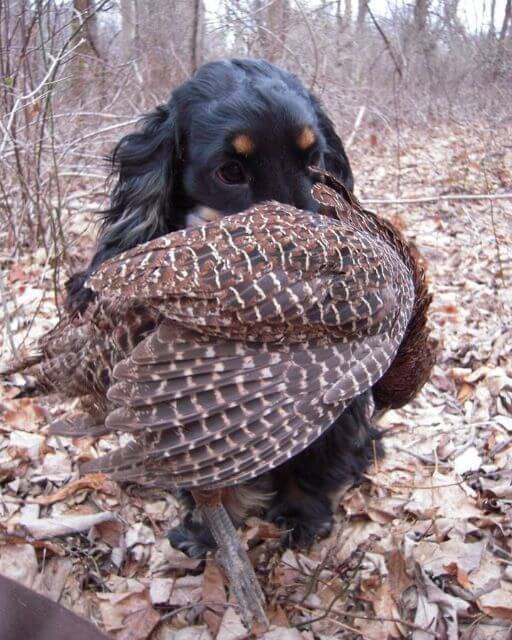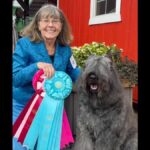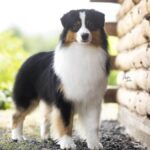This article was originally published in Showsight Magazine, January 2018 issue.
How Form Should Follow Function in The English Cocker Spaniel
“In Sport as in ladies’ hats, fashions have changed with each decade, yes, though fashions may change, we find that the merry little Cocker has always maintained his place in the esteem of the public and sportsmen alike, by dint of his extreme adaptability and courage and, let us face it, also by his hardiness to withstand the rigors of our English climate. He should never have been allowed to become a pampered pet, although the vast majority are, nowadays just that. Again blame his adaptability and lovable nature: but anyone who has ever seen these game little dogs working in the field must admit that this is their rightful heritage and the place where they are truly happy. A Cocker that has once tasted the delights of bustling in and out of the hedgerows and thickets and has had the scent of hare, pheasant, partridge, or the humble rabbit in his nostrils is lost forever to the drawing room. He will, on the slightest invitation, leave the cream cakes to follow the guns.”

Quote from the Dual Purpose Dog by A.W. Collins, circa 1950 (Collinwood Cockers, Kent, England).
Judges faced with the prospect of evaluating a ring full of English Cockers today might find themselves feeling slightly overwhelmed by the task. In this day and age, the breed can be presented in many shades and colors, various types and with luxurious, often sculpted coats which can hide the structure beneath. To successfully sort out the classes and reward the proper type, you would do well to remember the purpose for which the breed was developed.
From the opening paragraph in the standard, you get a sense of what the English Cocker was developed for:
“The English Cocker Spaniel is an active, merry sporting dog, standing well up at the withers and compactly built. He is alive with energy; his gait is powerful and frictionless, capable both of covering ground effortlessly and penetrating dense cover to flush and retrieve game. His enthusiasm in the field and the incessant action of his tail while at work indicate how much he enjoys the hunting for which he was bred.”
The essence of type of any breed should lie in the original purpose. Looking at some aspects of the standard, we can decipher the important traits and characteristics developed by the breed’s founders that make up the foundation for a distinctive and correct English Cocker Spaniel.

Substance: “The English Cocker is a solidly built dog with as much bone and substance as is possible without becoming cloddy or coarse.”
Historically bred to hunt in the thick cover and underbrush of the English countryside, the Cocker needed stamina, endurance, power and strength. Originally the breed was used only to find and flush the game, however in more recent times they were required to also retrieve, which in turn demanded a larger, more robust dog. Therefore, Cockers needed to possess a sturdy body capable of carrying the muscle and bone necessary to push through the thicket, hunt, flush and retrieve whatever game was afoot, often comparatively large foul or hare. It was essential for the breed to be capable of working all day with their master, being moderate in size, with bone, rib, depth of brisket, forechest and a broad, muscular rear. Through careful breeding we now have the veritable “Jack of all trades”, a steady, biddable, hardworking and determined companion, flushing as well as retrieving game, even from water.
Proportion: “Compactly built and short-coupled, with height at withers slightly greater than the distance from withers to set-on of tail.”
Slighter taller than long by the measurement listed in the standard, this breed should appear neither leggy nor low on leg. The correct, symmetrical make and shape of a cocker allows them to penetrate the type of dense cover that taller, leggier animals could not. They have just enough neck to comfortably reach down, pick up a bird and carry it without interfering with their gait. This is a breed of moderation and balance by necessity, as exaggeration of any characteristic could cause them to tire easily and therefore be incapable of fulfilling the task for which they were bred.

Coat: “On head, short and fine; of medium length on body; flat or slightly wavy; silky in texture. The English Cocker is well-feathered, but not so profusely as to interfere with field work. Trimming is permitted to remove overabundant hair and to enhance the dogs true lines. It should be done so as to appear as natural as possible.”
An often overlooked essential of breed type, the correct coat on a Cocker works as a protective shield from the weather and unforgiving terrain. It should be silky, with a topcoat jacket of longer, protective guard hairs and enough undercoat to keep them warm. The feathering should not be too profuse, nor over groomed. A correct coat will self-strip in the field, allowing the dog to work while avoiding mishap. A poor, cottony coat will cause a dog to snag and tie them up at the first bramble. A Cocker should also have supple, pliable skin, with enough give to allow them to hunt in the most difficult countryside without injury.
Head: “Strong, yet free from coarseness, softly contoured, without sharp angles.”
The characteristic head and expression of an English Cocker sets them apart from all the other Spaniel breeds. They have a soft, melting and endearing expression, with tight eye rims to keep them free from debris.

The skull: “Arched and slightly flattened when seen both from the side and from the front. Viewed in profile, the brow appears not appreciably higher than the back-skull.”
The skull is arched and slightly flattened (not flat) to allow for the wellmuscled jaw. They must not drop off too much in the backskull, as this will inhibit their ability to hold the bird in their mouth and retrieve in water; a down faced dog will be looking up into the sun.
Muzzle: “Equal in length to skull; well cushioned.”
Their muzzle is well cushioned to protect them from the thorns and thickets they work in, as well as the talons of the birds they hunt. They have strong jaws and teeth the size of a much larger breed. This breed is meant to do heavy lifting!
Gait: “The English Cocker is capable of hunting in dense cover and upland terrain. His gait is accordingly characterized more by drive and the appearance of power than by great speed.”
Bred to be a steady hunting companion, they should cover ground soundly and efficiently. However, this breed is not one of exaggeration and a moderate stride is desired. The English Cocker should reach to the end of his nose, without wasted motion or restriction. Their ever-wagging tail and the darting action they show while seeking game has led to the descriptive term of bustling.
In summary, this merry, active breed has won the hearts of many and deserves his place in history. Never let the window dressing he may be found sporting detract from the hardworking little hunting companion he was bred to be.
“He is an ideal companion & housedog; a great sportsman in the shooting field and is capable of doing all the work his bigger brothers can do, putting that joy into the task which has earned him the epithet ‘The Merry Cocker’, his actions denoting the pleasure he derives from his hunting.”
Quote taken from the introduction to “Cocker Spaniels” by H.S. Lloyd, of Ware Cockers, Middlesex, England.













